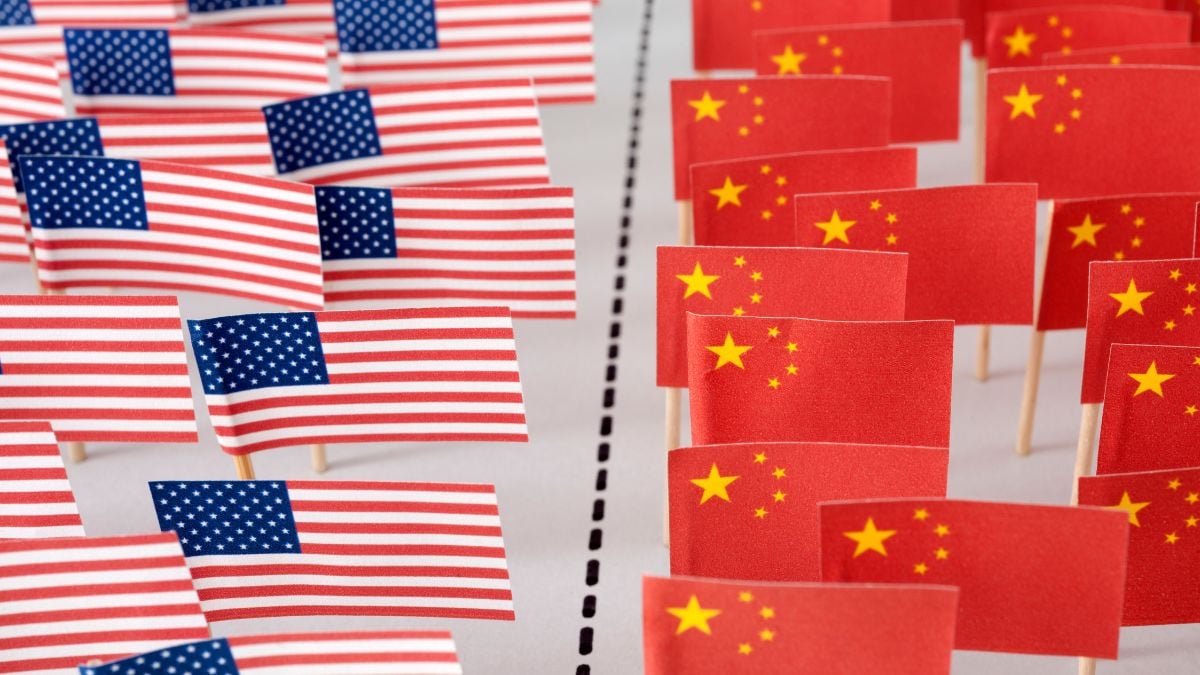
China announced on Friday a new round of tariffs amounting to 34% on selected U.S. imports. The decision marks the most aggressive retaliatory move by Beijing to date, fueling global market fears and deepening economic tensions with the United States. This latest move by China follows a series of increased tariff measures introduced by the Donald Trump administration, which have already led to severe disruptions in international trade and investor confidence.
Why is China targeting U.S. goods with 34% tariffs?
China’s decision to impose the 34% duties comes in direct response to the sweeping U.S. tariffs introduced by President Donald Trump, which have elevated American trade barriers to levels not seen in over a century.
These retaliatory measures also reflect Beijing’s efforts to counterbalance mounting pressure from Washington, especially over sensitive geopolitical issues like Taiwan, as well as broader concerns over technology and industrial policy.
ALSO READ: This is Donald Trump’s reciprocal tariffs chart
What are the other trade actions China is taking?
In addition to the steep tariffs, Beijing has placed 11 U.S. entities on its “unreliable entity” list, a punitive mechanism that enables the Chinese government to sanction foreign firms that, in its view, threaten national interests. Many of the listed firms have been linked to arms sales to Taiwan—a self-governed democracy that China considers a breakaway province.
China also tightened its grip on exports of rare earth elements, which are crucial for the manufacturing of high-tech goods including electric vehicles and defense systems. This move is widely interpreted as a strategic warning shot aimed at industries heavily reliant on Chinese minerals.
ALSO READ. Who is Russell Brand and what is the net worth of the actor accused of rape?
How are markets reacting to the trade tensions?
The markets reacted swiftly and severely. Wall Street saw sharp losses at the opening on Friday, wiping out $2.4 trillion from U.S. equity values in a single session. Shares of major tech companies with exposure to China, such as Apple and Nvidia, fell sharply in premarket trading.
In Japan, a top U.S. trade partner, Prime Minister Shigeru Ishiba described the situation as a “national crisis,” as banking shares plunged and Tokyo’s stock market slid toward one of its worst weekly performances in recent years.
What is the U.S. response to China’s latest tariffs?
President Donald Trump responded quickly and defiantly to the Chinese announcement. “China played it wrong, they panicked — the one thing they cannot afford to do!” he wrote in a post on his social media platform, in all capital letters. Earlier, Trump had emphasized the resilience of the U.S. economy and markets:
“To the many investors coming into the United States and investing massive amounts of money, my policies will never change. This is a great time to get rich, richer than ever before!!!”
Despite the rhetoric, the economic fallout is causing concern even among institutional investors. According to J.P. Morgan, the likelihood of a global recession by the end of the year has risen to 60%, up from a previous estimate of 40%, as the escalating tariffs dampen trade and confidence worldwide.
Is there any chance of renewed negotiations?
Trump had hinted at possible negotiations with China, suggesting that a deal over TikTok could potentially serve as a bargaining chip. He floated the idea of relieving U.S. tariffs on Chinese goods in exchange for Beijing’s approval of the sale of TikTok, which is owned by China-based ByteDance. However, when asked whether he would be speaking with Chinese President Xi Jinping, Trump declined to provide a clear answer, merely calling the TikTok deal “an example.”
What does this mean for the future of U.S.-China trade?
The reintroduction of aggressive tariffs and sanctions signals a deepening rift between the U.S. and China, with little indication that tensions will subside in the short term. As both governments double down on nationalist economic policies, the likelihood of a sustained global trade conflict increases.
For businesses, investors, and policymakers around the world, this situation underscores the fragility of global supply chains and the risks of heavy reliance on bilateral trade between two superpowers.










